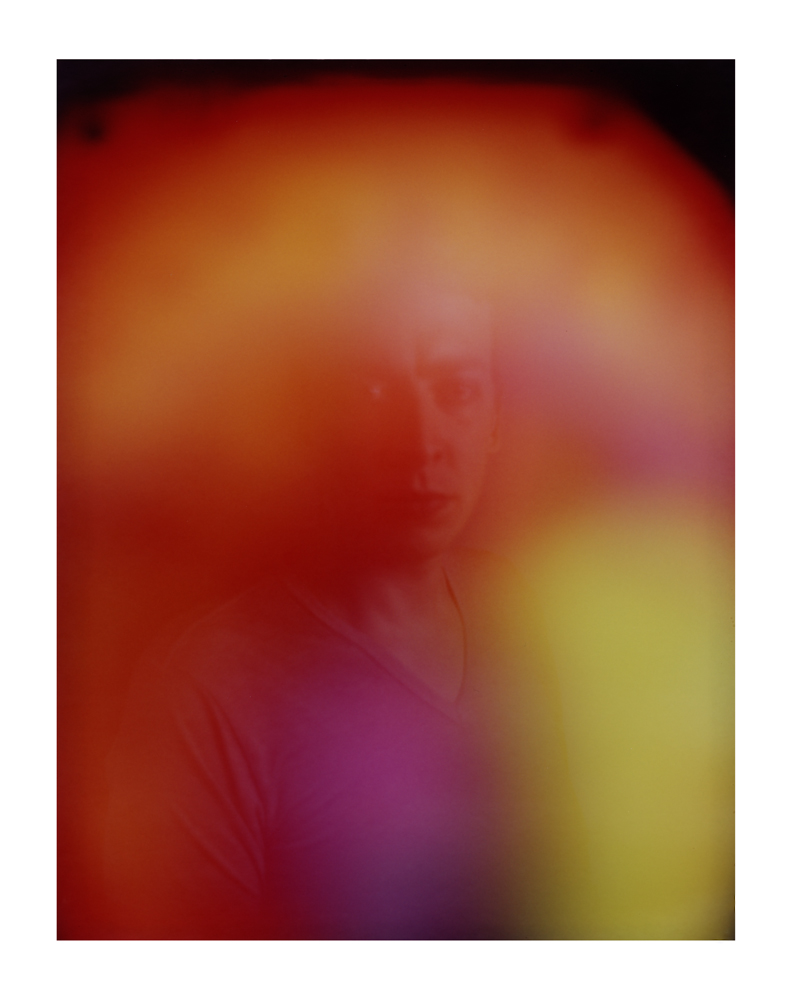Carlo Van de Roer’s Paraphotography
Carlo Van de Roer is not a psychic. He can, however, read your aura—that intangible, mystical energy unique to each individual—with the press of a button.
Originally a landscape photographer, Van de Roer began taking instant aura portraits of his friends and family over five years ago. His point of access is the AuraCam 6000, a leftover invention from the ’70s that captures a subject’s biofeedback through electronic sensors. His inspiration: the more curious technological inventions of the late 19th century. “I’m a bit obsessed with that period of scientific invention,” explains Van de Roer. “This whole tangent of bizarre inventions in the fringe sciences that was sort of co-opted into parapsychology.”
There is more to Van de Roer’s portraits, however, than just novelty. With the AuraCam, Van de Roer challenges the fundamentals of photography and the assumption of artistry. “In making a portrait, there exists a relationship between artist, camera, subject, and viewer that was new to me,” he explains. “There is the question of who or what authors the portrait in that relationship: Could a camera reveal something about the subject we don’t otherwise see? Could it reveal the photographers opinion about the subject? What control does the subject have?” he continues. “The AuraCam seemed like a really excessive example of the idea that a camera can reveal an otherwise unseen insight. There is only one button on the camera, suggesting little mediation from me.”
At the Sundance Film Festival last month, Van de Roer was invited to set up a portrait station at the 1MSQFT pop-up gallery curated by Ken Miller. In between musical performances by the likes or Mac DeMarco and art instillations, Van de Roer exhibited his previous portraits (of Miranda July, Waris Ahluwalia, Taika Waititi) and took new ones of the directors, musicians, artists, and actors filtering through the gallery, which you can see exclusively above. “Carlo’s project seemed ideal for Sundance because he uses archaic technology,” says Miller. “It would be really different from your typical portrait shoot.”
Usually, Van de Roer is able to predict a person’s aura, especially those of close family and friends. But he is occasionally surprised. “There can be a tension between my expectations and how the portrait comes out,” he admits. “I was talking to Taika Waititi about this at Sundance. His portrait, which was in the show there, is a convincingly calm portrait, but that’s not necessarily how I think of him.” The question of authorship arises once more. “The same thing happens with people’s expectations of their own portraits, and its something we both end up trying to control. I might try to affect the subject by trying to calm them down or piss them off; people have jumped in the studio freezer or worn things to try to influence sensors on the camera,” notes Van de Roer. “Using such a controlling camera that is connected to the subject and makes such an excessive promise of insight has been a way to exploit the power play in that relationship.”
As for Van de Roer ‘s own aura: “Mine never seems to change,” he says.
FOR MORE ON CARLO VAN DE ROER, VISIT HIS WEBSITE.







